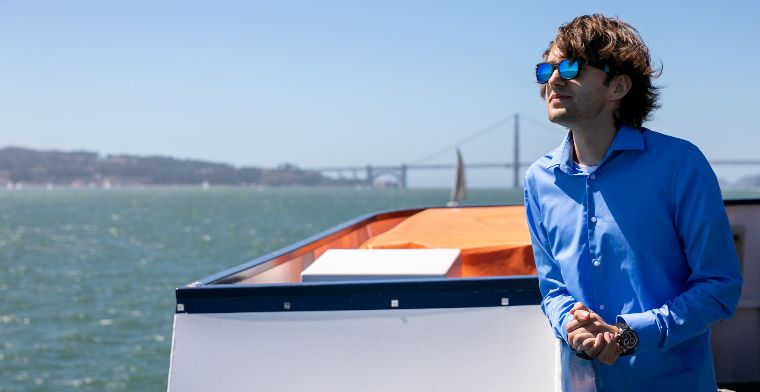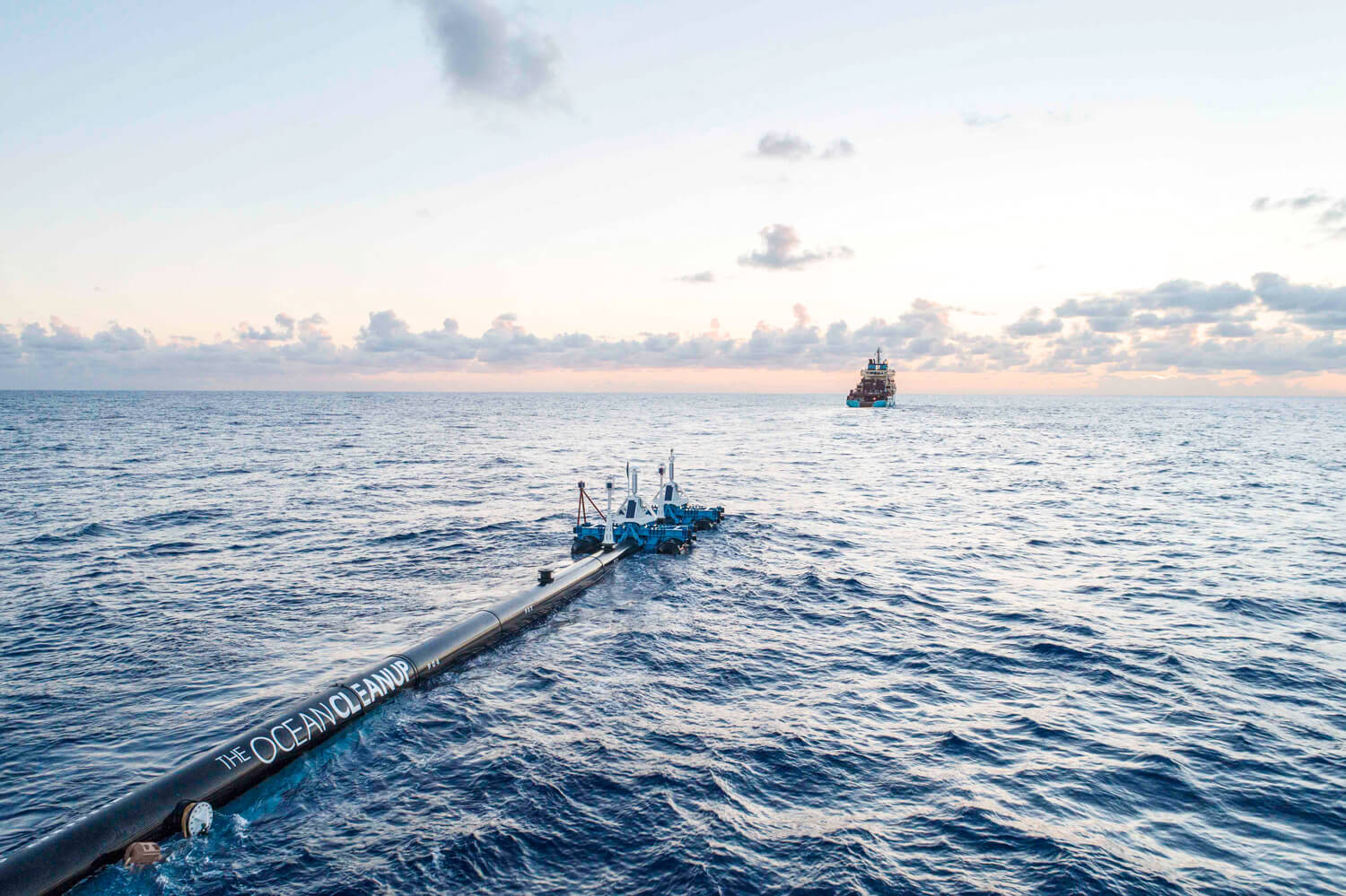Above: Installation of System 001 at Pacific Trial test site on September 15. Credit: The Ocean Cleanup
By: Duncan Robinson
A remarkable process that was dreamed up by a teenager, has just begun in the Pacific Ocean—and it could help save our struggling ocean ecosystems.
It’s the cleanup of the Great Pacific Garbage Patch.
If you were to jump in a boat and sail to the North Pacific Ocean you would hit an area officially called as the ‘Pacific Garbage Gyre’, also known as the ‘Pacific Trash Vortex’.
This gyre, or giant spiralling vortex of rubbish, is located North of Hawaii and extends between Japan and North America. A conservative estimate puts the region at the size of Texas (700,000 sq kms) – and it’s filled with plastic.

It was a National Geographic Survey in 1988 that alerted us to this particular gyre, the biggest of five that exist around the globe.
Flash forward to 2008, and enter Boyan Slat, a 18 year old Dutch kid who believed that he could clean up the ocean. He estimated a system he’d invented could clean up the ocean and collect 80,000 tonnes of plastic—a total of roughly 1.8 trillion plastic pieces.
His system was simple, energy neutral and had a minimal impact on marine life. The Ocean Cleanup movement was founded and a global team assembled behind his simple vision to develop a system to clean up the ocean.
Last month System One was launched for its first test run, and now it’s being deployed in the Pacific Ocean.

Plastic has a devastating impact on the ocean, the chief offender being microplastics, which look edible to most marine life. This leads to a phenomenon term called bioaccumulation, in which plastic substance makes its way into the bodies of sea creatures and slowly works its way up the food chain to humans.
Effectively every piece of plastic that has been created by humanity is still in existence, and that which isn’t recycled or buried ends up in the ocean.
Article supplied with thanks to Hope Media.
About the Author: Duncan is a radio host, pastor, husband and father of two.
